Millipedes are a frequent pest encountered after rainfall. They prefer wet and humid conditions and are generally found outside your property, where they dig and hide in tiny crevices. The millipedes can also be found indoors around patio doors, windows, and basements.
How to get rid of millipedes naturally? The two oils that are most frequently used for treating millipedes are tea tree oil and peppermint oil. Prior to use, essential oils should always be diluted with water. You can also create a millipede trap using vinyl tubing and a piece of ripe fruit as an attractant.
This article will provide you with all you need to know about recognizing, destroying, and preventing millipedes from entering your property.
What Are Millipedes?
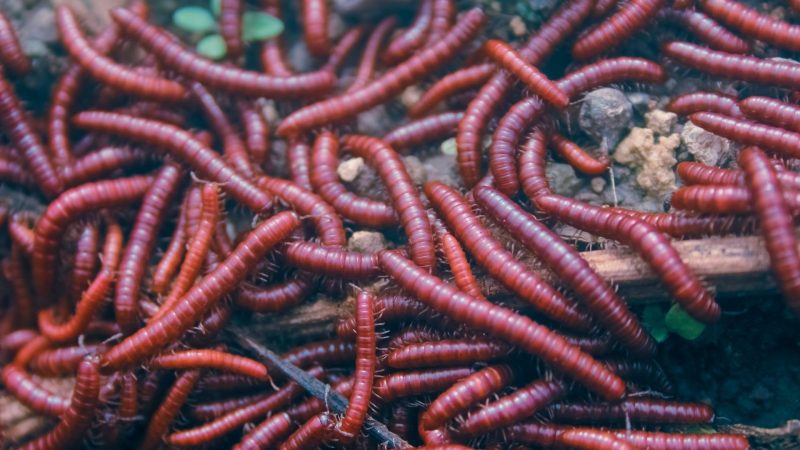
Millipedes are decomposers, meaning they eat dead plants. Their bodies are spherical and feature an external skeleton. When threatened, millipedes wrap up into a spiral. Millipedes like wet environments so they’re commonly found in crawl spaces, moist basements, cellars, and sliding glass doors or windows.
What Do Millipedes Look Like?
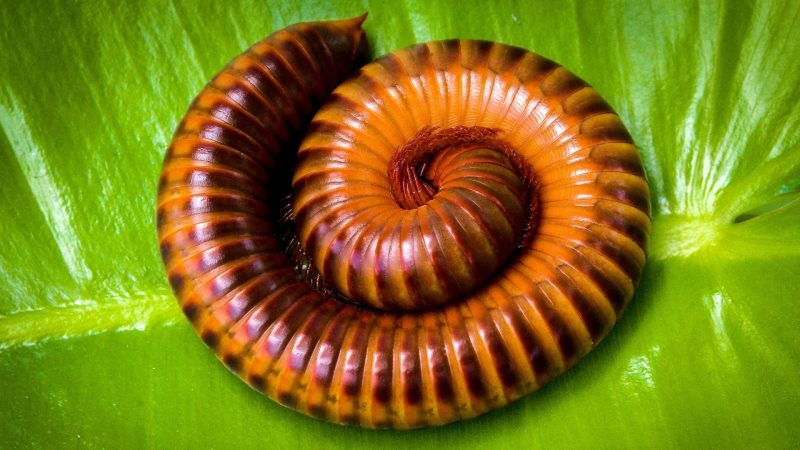
Millipedes are usually one to two inches long. The common millipedes resemble worms with legs and are brownish or black in appearance. Millipedes feature spherical heads with small antennae and long segmented bodies with two pairs of legs on most of their segments.
How Many Legs Do Millipedes Have?
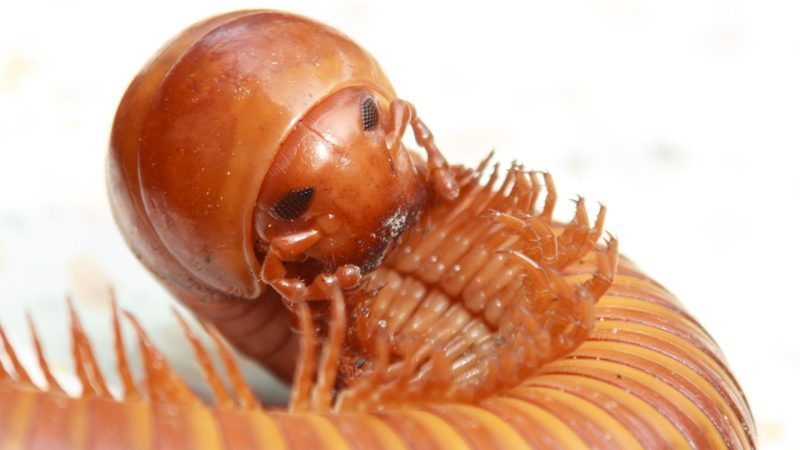
Millipedes have a spherical body with two pairs of tiny legs on each segment and a rugged exterior skeleton. Their legs are hidden beneath their bodies, making it impossible to view them. The number of pairs of legs is usually between 40 and 400.
What Do Millipedes Eat?
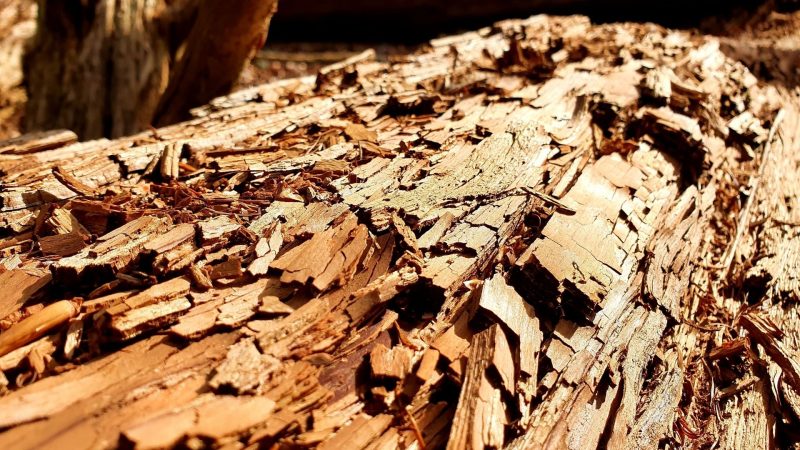
They consume rotting or wet wood particles. The millipedes also eat decaying leaves and other parts of plants. If their habitat becomes too dry, millipedes will damage living plants. The green foliage and delicate roots might provide them with moisture.
What Do Millipedes Do for Nature?
Millipedes are nature’s tiny recyclers. They are detritivores, which means they feed on the remains of living plants and animals. Millipedes recycle nutrients into the soil at a far faster pace than plants, and animals decompose naturally.
What Is the Difference Between Centipede and Millipede?
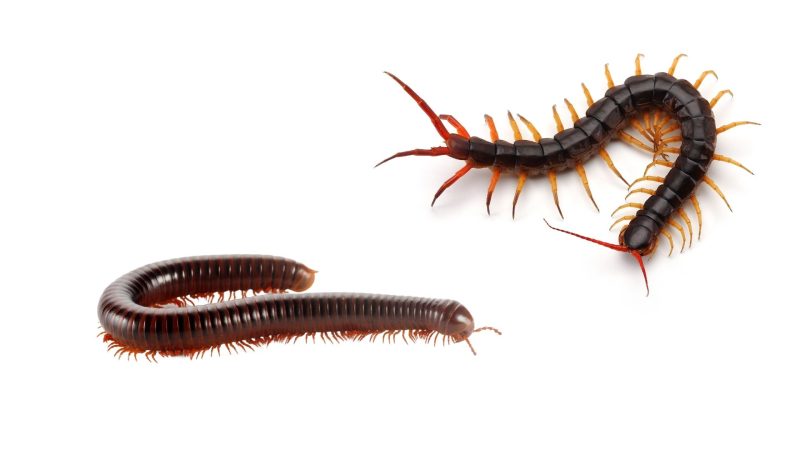
Centipedes have a flattened shape, but millipedes have a more rounded body. They react to dangers in a variety of ways. A millipede coils up and produces a foul-smelling substance. Centipedes may bite, but they are usually harmless to people and escape quickly.
While both species of arthropods have numerous feet, the legs, and feet are the best methods to recognize the difference between a centipede and a millipede.
The best way to visually differentiate them is by the position of their legs. Millipede legs point down toward the ground, but centipede legs point away from their body. Centipede legs are generally usually longer than millipede legs.
Related: How to Get Rid of House Centipedes Naturally? | Control Guide
Where Do Millipedes Live Outdoors?
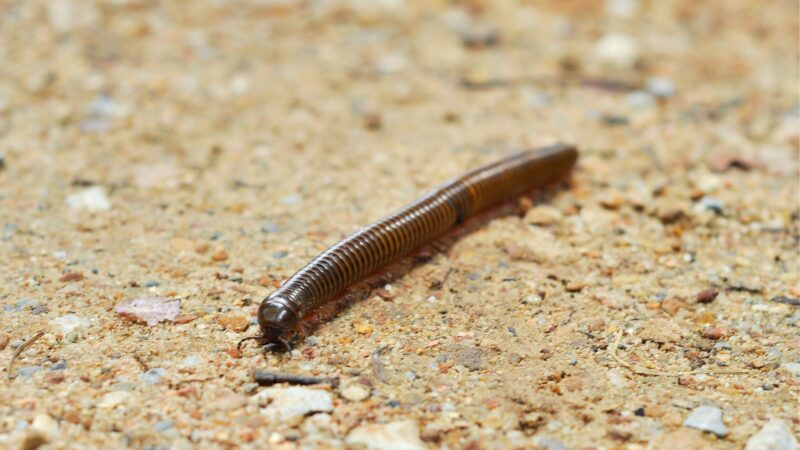
Millipedes like to spend their lives outside. Because they require a lot of moisture, they want to dwell in wet locations. Millipedes can be found in gardens and flowerbeds throughout the yard.
They live in mulch, dead leaves, and even grass-cutting heaps. Millipedes can also dwell under the layer of thatch between the grass and the soil in well-established lawns.
Where Do Millipedes Live Indoors?
Millipedes are commonly seen at lower levels, basements, laundry rooms, and restrooms. Most millipedes that find their way into your home perish due to a lack of water. Millipedes, on the other hand, may survive for extended periods in basements with plenty of moisture.
Why Do I Have Millipedes in My House?
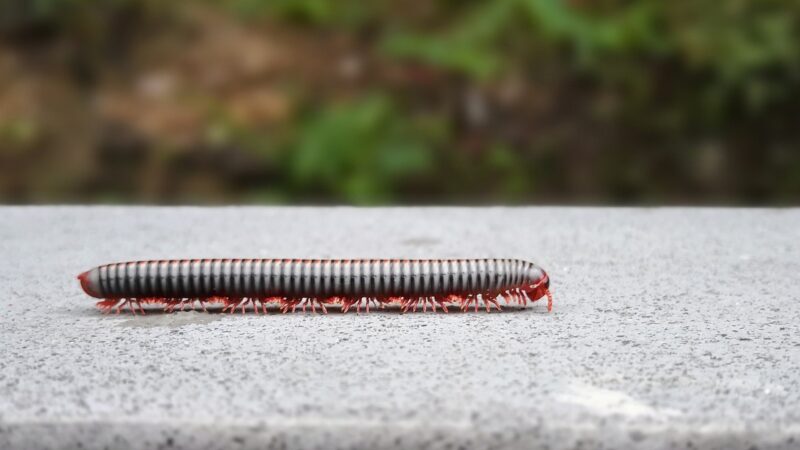
They prefer to dwell outside, although they have been known to infiltrate your home, garage, crawl space, or basement. The millipedes will retreat indoors for two reasons:
- During dry seasons, in the quest for water.
- During a downpour, seek cover (which disrupts their natural habitat)
If you see a lot of millipedes in your house, they’re most likely reproducing and coming in from your grass, mulch or compost piles, or moist leaves and other waste near your house’s foundation.
Are Millipedes Bad in the House?
Millipedes aren’t dangerous; they can’t bite or sting, and they don’t attack people, their belongings, or their pets. The millipedes hide under leaves and dead plant detritus during the day, in cracks and crevices, and dwell outdoors or in moist environments such as greenhouses.
Are Millipedes Harmful to Humans?
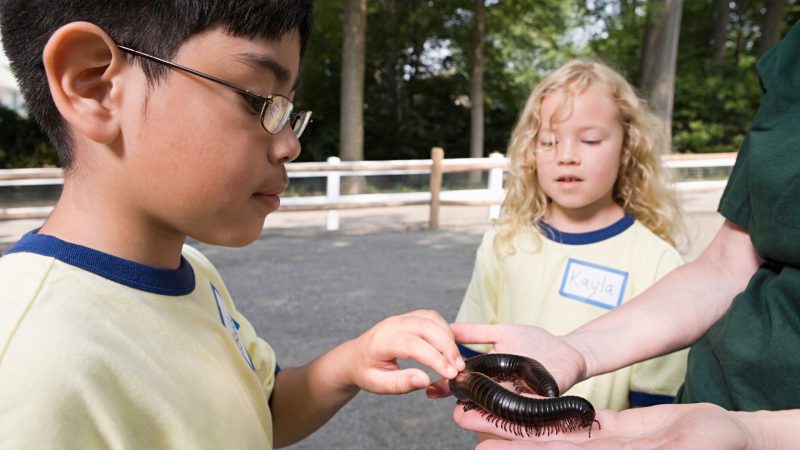
Millipedes are not dangerous to humans. They are also unable to bite or sting. However, they can produce a foul-smelling fluid that can irritate the skin and should be rinsed off immediately.
Do Millipedes Burn You?

Although millipedes are considered harmless, when handled, they can leave a foul-smelling substance on your hands. The excretion might cause itching, burning, or skin irritation in certain people.
What Do Millipedes Hate?

Tea tree oil and peppermint oil are two of the most popular millipede repellents. These essential oils should always be diluted with water before use. To do this, mix 6 ounces of water with 25 drops of any essential oil in a spray container. Then, spray the area around door frames, windows, minor crevices, and basement doors. To keep millipedes at bay, repeat once a week.
Natural Methods of Keeping Millipedes Away
There are various methods of permanently eliminating millipedes, so here are a few of the most simple:
Boric Acid
Boric acid is a very efficient powder in eliminating millipedes, roaches, and other insects from a certain area. Sprinkle the powder in cracks and crevices and observe a significant reduction in the number of insects in your home.
Cayenne Pepper
Millipedes are repelled by cayenne pepper. It works by giving them a hot or burning sensation. Sprinkle the pepper in locations where millipede activity has been discovered. This is also a great idea to sprinkle it around the foundations and entry points of your property.
Diatomaceous Earth
Diatomaceous earth is composed of silica. They gradually dehydrate the exoskeletons of these millipedes, causing them to dry out and die. It may be sprinkled around the edges of rooms, behind appliances, between door frames, in basements, and in potted plants.
No products found.
Millipede Trap
To do this, follow the steps below:
Step 1: Take a length of vinyl tubing, similar to that of a plastic soda bottle, and a piece of ripe fruit.
Step 2: Insert the ripe fruit into the plastic bottle. The millipedes will be attracted inside the bottle.
Step 3: You may set up many of these traps in areas where millipedes are active.
Related: Diatomaceous Earth Uses as a Natural Pesticide | Tips and Guide
What Kills Millipedes Instantly?
Millipedes can be quickly killed by spraying pesticides directly on them, either with an aerosol or a ready-to-use pumping pack. The easiest way to keep millipedes out is to spray a border with insecticides and around possible entry spots.
How to Prevent Millipedes?
The easiest method to keep millipedes out of your property is to prevent them from entering in the first place. These are some tips that you can follow:
- Seal any gaps or fissures in the foundation, near wiring and plumbing, or wherever else millipedes or other pests may get in.
- Millipedes require a high level of dampness. Use dehumidifiers or fans in spaces with poor air movement to keep the air dry.
- Identify and fix any leaks. Millipedes might be attracted to leaking faucets or pipelines.
- Clear up the gutters and remove any rubbish. Gutter clogs can prevent water from draining correctly.
- Maintain cleanliness in your yard by eliminating dead plant material.
- Remove any piled-up mulch or woodpiles that may attract millipedes.
- Enclose your crawlspace or basement and provide enough ventilation to reduce humidity in your property.
- Overwatering your lawn should be avoided, and watering in the morning rather than at night will allow the grass to dry up before evening. Reduce the amount of water that pools on your grass by adjusting your sprinklers.
List of Sources
Everyday Mysteries – Zoology: How Are Millipedes and Centipedes Alike and How Do They Differ? (2019). Library of Congress.
Phillips, G., et al. (2016). Occasional Invaders: Millipedes. University of Tennessee.
Millipedes. Iowa State University.
Waldvogel M., Alder, P. (2019). Household Pests: Controlling Millipedes in and Around Homes. NC State University.
Bechinski, E., Merickel, F. (2009). Homeowner Guide to Centipedes and Millipedes. University of Idaho.
- How to Get Rid of Copperheads | Practical Guide - August 27, 2023
- How to Get Rid of Corn Snakes | What Makes Them Aggressive? - August 27, 2023
- How to Get Rid of Alligators | Safety Measures and Removal Methods - July 16, 2023
